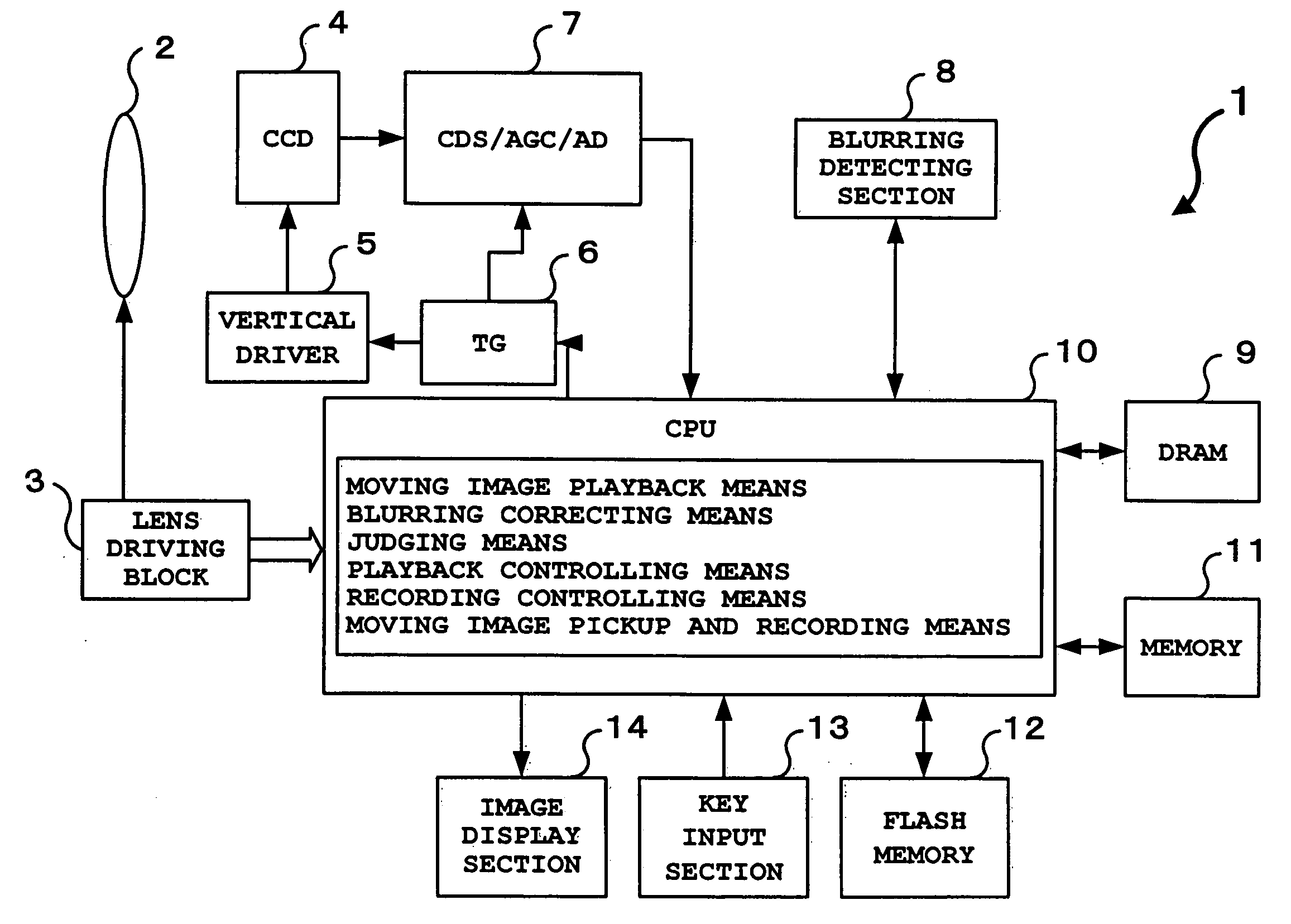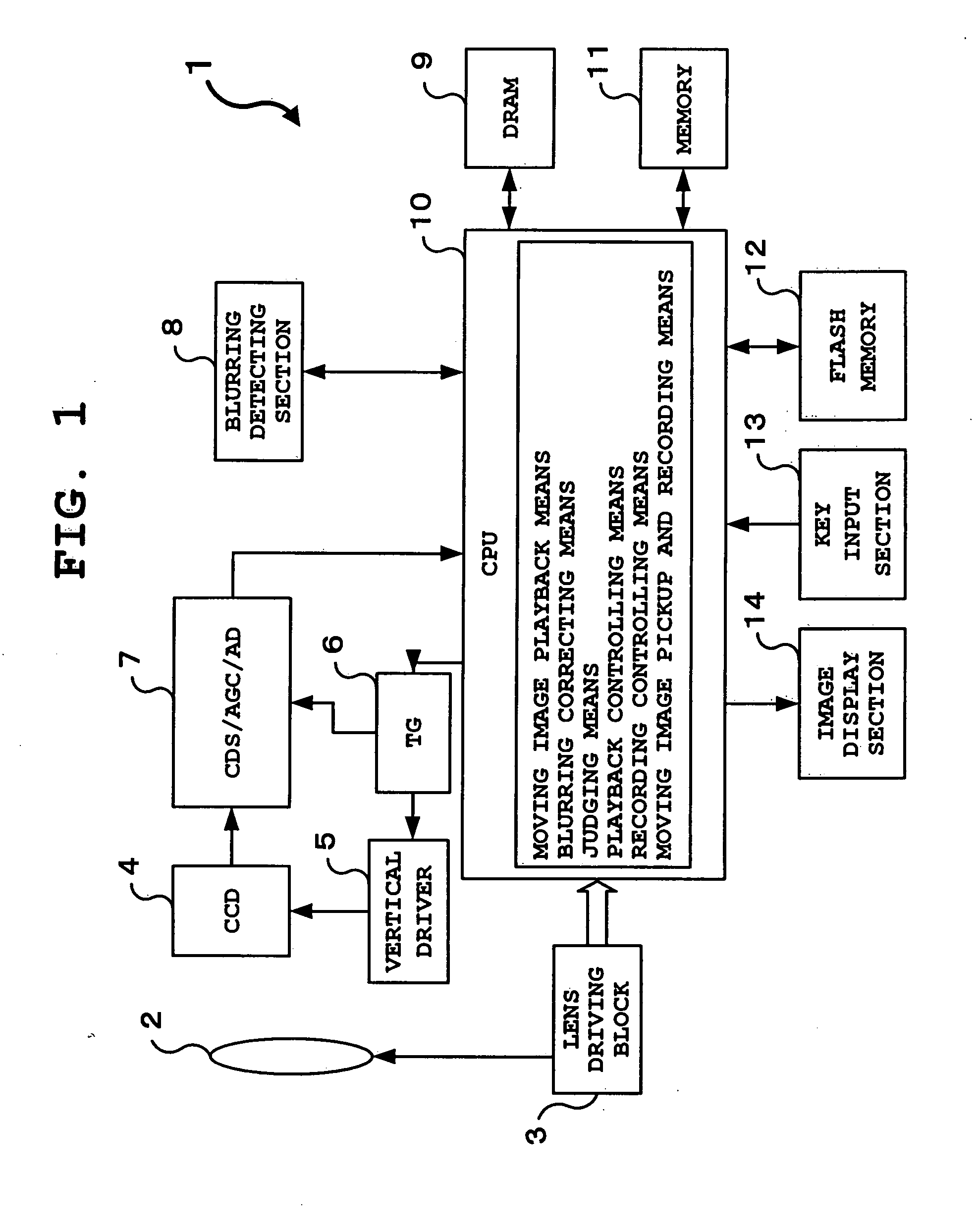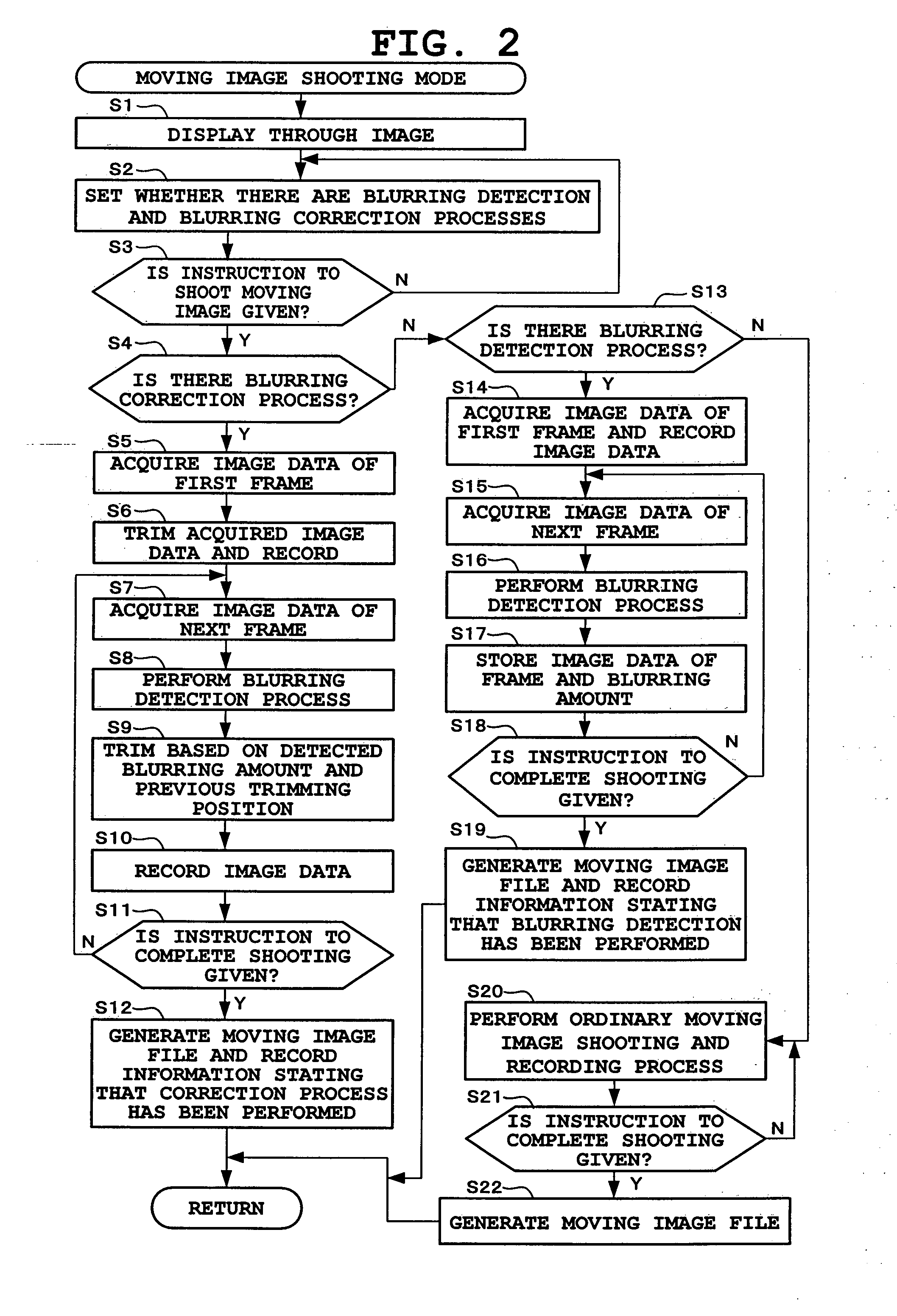Moving image playback device with camera-shake correction function
a technology of moving image and playback device, which is applied in the field of moving image playback device including a camerashake correction function, can solve the problems of large calculation amount, high power consumption, and rapid waste of batteries, so as to achieve the effect of not needlessly consuming unnecessary processes, and not needlessly consuming power
- Summary
- Abstract
- Description
- Claims
- Application Information
AI Technical Summary
Benefits of technology
Problems solved by technology
Method used
Image
Examples
example 1
D. Variation Example 1
[0102]The following variation example is possible according to the above embodiment.
[0103]According to the embodiment, the user selects whether to perform the blurring correction when the moving image is being played back. However, in the variation example 1, whether the blurring correction is required is automatically judged based on the moving image data of the moving image file.
[0104]Hereafter, an operation of the digital camera 1 in the variation example 1 will be described with reference to the flowchart in FIG. 5.
[0105]When judged at Step S32 in FIG. 3 that the blurring correction has not been performed, the CPU 10 proceeds to Step S101 and judges whether the blurring detection has been performed on the designated moving image file. Namely, the CPU 10 judges whether the information stating that the blurring detection has been performed is recorded in the header of the moving image file.
[0106]When judged at Step S101 that the blurring detection has not bee...
example 2
E. Variation Example 2
[0118]The following variation example is possible according to the above embodiment.
[0119]According to the embodiment, the user selects whether to perform the blurring correction before the moving image is played back. However, in the variation example 2, the blurring amount in the frames is detected when the moving image is being played back. When the blurring amount is large, the blurring correction is performed. When the blurring amount is small, the blurring correction is not performed.
[0120]Hereafter, an operation performed by the digital camera 1 in the variation example 2 will be described with reference to the flowchart in FIG. 6.
[0121]In moving image playback mode, the CPU 10 designates the moving image file selected by the user from among the moving image files recorded in the flash memory 12 (Step S151).
[0122]When the moving image file is designated, the CPU 10 judges whether the blurring correction has been performed on the moving image data of the ...
example 3
F. Variation Example 3
[0152]The present invention can be further actualized by the following variation example, according to the above embodiment and variation examples 1 and 2.
[0153](1) According to the above embodiment and the variation examples 1 and 2, the blurring detecting section 8 detects the blurring amount in all image data of the frame. However, the blurring amount can be detected based on the image data in an area to be trimmed, among all image data in the frame.
[0154]The area to be trimmed within the frame is decided after the motion vector of the frame is detected. Therefore, the image data in the area to be trimmed of which the motion vector is detected refers to the image data in a previously trimmed area or an area depending on the predetermined trimming position and trimming size.
[0155]As a result, the area to which the blurring detection process is performed can be reduced. Therefore, power consumption of the battery can be suppressed. In addition, the blurring ca...
PUM
 Login to View More
Login to View More Abstract
Description
Claims
Application Information
 Login to View More
Login to View More - R&D
- Intellectual Property
- Life Sciences
- Materials
- Tech Scout
- Unparalleled Data Quality
- Higher Quality Content
- 60% Fewer Hallucinations
Browse by: Latest US Patents, China's latest patents, Technical Efficacy Thesaurus, Application Domain, Technology Topic, Popular Technical Reports.
© 2025 PatSnap. All rights reserved.Legal|Privacy policy|Modern Slavery Act Transparency Statement|Sitemap|About US| Contact US: help@patsnap.com



